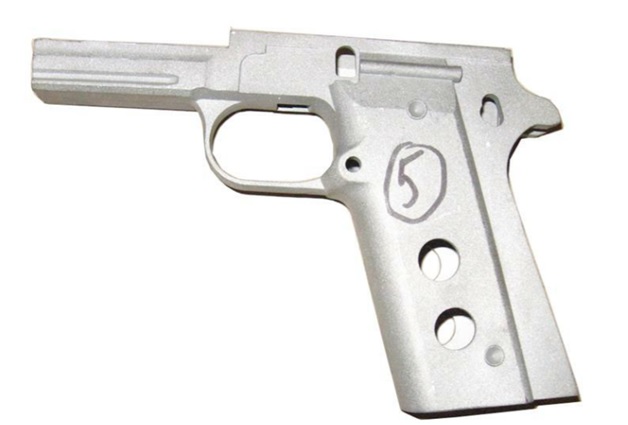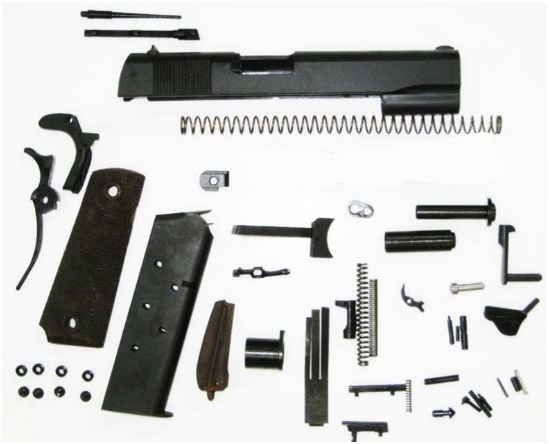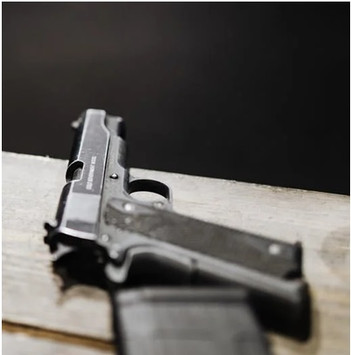1911 Frames: Different Sizes and Completing a Project
Jul 6th 2022
Many modern firearms are built around a receiver, which is the part (typically milled steel or aluminum) to which all of the gun’s other parts (barrel, trigger group, stock, etc.) affix.
Some firearms are built around frames instead of receivers. For instance, the 1911 is built around a 1911 frame and has no designated receiver. However, the frame still fills the same role as the receiver. It accepts all of the other components.
Since the frame or receiver is the part that enables a complete, functioning firearm to be assembled, these are the parts that are regulated by the ATF as “firearms” and are controlled and serialized.
Consequently, there are quite a few questions out there regarding 1911 frames. We took some of these into account and answered them.
Can You Build a 1911?
The short answer is generally yes but state and federal laws vary widely on this subject. Do not take anything in this article as legal advice. Always consult a firearms lawyer before proceeding with an at-home build project if you have questions.
The ATF, which governs the manufacture, sale, and possession of firearms in the United States at the Federal level has stated that,
“No, a license is not required to make a firearm solely for personal use. However, a license is required to manufacture firearms for sale or distribution. The law prohibits a person from assembling a non–sporting semiautomatic rifle or shotgun from 10 or more imported parts, as well as firearms that cannot be detected by metal detectors or X–ray machines. In addition, the making of an NFA firearm requires a tax payment and advance approval by ATF.”
Therefore, some individuals choose to create PMFs, or “privately made firearms” using a receiver blank or a frame blank and a jig kit.
Some 1911 frames, if they are unfinished, will not be serialized and will require additional machining before they can be used to assemble a functioning 1911 pistol. If they are blanks, they can be purchased without the need for an FFL.
However, many states have levied possession on the sale, possession, or alteration of receiver blanks, making it illegal even to own them.
Therefore it is imperative for you to consult your own legal counsel before proceeding with a project.
Nonetheless, it is possible to complete a 1911 frame with the proper jig kits and tools and to assemble a functioning pistol with an appropriate build kit.

What Are the Different 1911 Frames?
There are three main 1911 frames that have been used in the official production of 1911 pistols. These are the Government frame, the Commander frame, and the Officer frame.
- Government frame (full-sized): The Government frame is the largest of the three common 1911 frames and creates the longest, heaviest pistol. Depending on the components you use to complete the pistol, it will likely be just over 8” in length, just over 5” in height, about 1” wide at the slide, and about 1.5” wide at the grips, although this can vary. 1911 pistols created using Government frames are the largest and heaviest of the bunch. That said, they are still relatively slim (for those who would carry them) and because they are largest and heavier, will help absorb recoil slightly better than the other, smaller versions.
- Commander frame (compact model): The Commander frame is the intermediate-sized 1911 frame and slightly smaller than the Government model. Depending on the parts you use to complete the pistol, it will probably be about ¾” shorter than a pistol created using a Government frame. Otherwise, they’re about the same size and weight as Government 1911 pistols. This makes them more popular for concealed carry.
- Officer frame (subcompact): The Officer frame is the smallest of the bunch, and creates 1911 pistols that are generally just under 5” in height, with barrels of 3.5” being standard. However, there are shorter barrels that can be used to create even smaller models. The lightest and smallest of the bunch, these are preferred for concealed carry for their slim profiles, lightweight, and small overall print.
What Comes with a 1911 Build Kit?

Because the 1911 accepts a lot of drop-in ready parts, making or repairing a 1911 pistol is a straightforward process. Manufacturers make a wide range of parts that are cross-compatible between pistols and can be used to adjust, repair, upgrade, or build at home.
If you’re planning on making your own 1911 you have two basic options. You can buy all of the parts piecemeal or you can purchase a build kit that will have most if not all of the parts you need. Building piece by piece gives you more freedom and flexibility, but it can end up costing more money and you have to be extra vigilant about finding all of the parts and hardware you need.
Building one from a 1911 build kit, by contrast, is convenient and has most of what you need. For instance, the .45 1911 build kit we carry here contains:
- A threaded barrel and slide
- Slide stop
- Recoil spring
- Grips and screws
- A magazine
- Firing pin and spring
- A trigger, mainspring, and housing
- Hammer and strut
- Sear and spring
- Ejectors and extractors
- Pins, disconnectors, and springs
- And more
Basically, a build kit like this has everything you need to build a 1911 pistol minus the frame. You can either buy a serialized, completed frame (a firearm purchase requiring a NICS check) or purchase a frame blank and complete the project yourself (again, if legal; some states have outlawed frame and receiver blanks; do not assume it is legal where you live).
Questions? Visit or Contact Us
If you have questions about 1911 frames or what comes with a 1911 build kit, please contact us at 610-250-3960 or visit us in our store.
Our firearms experts have many years of experience in this industry and we’ll help set the record straight in any way that we can. Come visit us at our location in Easton, Pennsylvania at 50 Hilton Street. We’ll show you what your options are, go over some of the different frames, and let you know what you’ll need to complete a build or make repairs, upgrades, or customizations.

